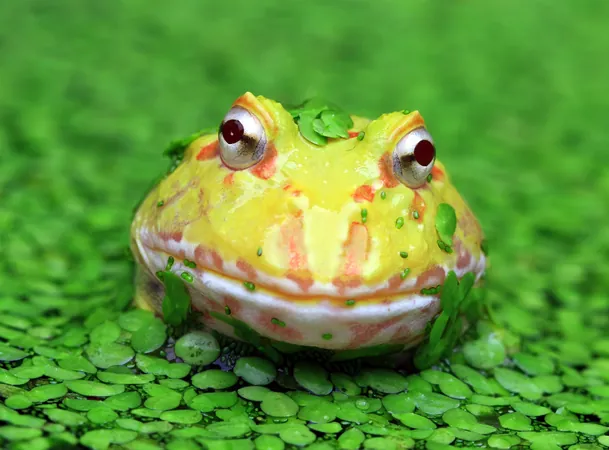
Shocking Discovery: Uranus' Moon Miranda May Have Held a Liquid Water Ocean!
2024-11-01
Author: Yu
Introduction
Scientists are constantly uncovering intriguing details about the celestial bodies of our solar system, and the latest revelation regarding Miranda, a small moon of Uranus, has taken the astronomical community by storm. For years, moons like Europa and Enceladus, orbiting Jupiter and Saturn respectively, have been the prime suspects in harboring subsurface oceans. However, recent studies suggest that Miranda may very well have had its own watery depths!
Research Findings
In a study leveraging data captured by the Voyager 2 spacecraft during its historic flyby in 1986, researchers have proposed that Miranda possessed a subsurface ocean as recently as 100 to 500 million years ago. This potential ocean might have been a staggering 62 miles (100 kilometers) deep, situated beneath approximately 19 miles (30 kilometers) of icy crust. With a radius of only 146 miles (235 kilometers), this means that almost half of Miranda could have been filled with water!
Geological Characteristics
The surface of Miranda is a chaotic tapestry of geological features including deep grooves, rugged scarps, and craters that aid scientists in piecing together the moon's history. Tom Nordheim, a planetary scientist at Johns Hopkins Applied Physics Laboratory, and his team sought to reverse-engineer these peculiarities by analyzing the moon's surface features. Using advanced computer models, they explored various internal structures that could explain the observable geology.
Tidal Heating and Liquid Water
Imagine the thrill of realizing that this tiny moon, once thought to be relatively simple, could hint at an ocean world looming beneath its icy façade! Researchers theorize that interactions between Miranda and neighboring moons might have generated enough tidal heating to maintain liquid water. This gravitational dance could have produced the necessary warmth to churn up a subsurface ocean—much like how Jupiter's moon Io fuels its volcanic activity through similar mechanisms.
Remaining Evidence and Future Exploration
Yet, intriguing questions remain: Is there any remaining evidence of this ocean? The study indicates that while Miranda likely lost its warmth and subsurface ocean over time, there may still be remnants of it trapped beneath the icy exterior. "It's incredibly surprising to think that we could find such evidence in a small and distant moon," Nordheim noted, emphasizing the extraordinary nature of this discovery.
Broader Implications
Miranda's relics provide a tantalizing hint at a broader narrative about the moons of Uranus—could they all hide oceans? The potential for future exploration to verify these hypotheses is stimulating excitement among scientists eager to delve deeper into the mysteries of our solar system.
Conclusion
As we continue to analyze the lifeblood of Voyager 2's data, the anticipation for future missions to Uranus and its captivating moons grows stronger. These smaller celestial bodies may soon reveal secrets that could change our understanding of habitability beyond our planet. Who knows? Miranda and her fellow moons might just be the key to unlocking extraterrestrial oceans!
Stay Tuned
Stay tuned for more groundbreaking news as we explore the captivating cosmos.



 Brasil (PT)
Brasil (PT)
 Canada (EN)
Canada (EN)
 Chile (ES)
Chile (ES)
 España (ES)
España (ES)
 France (FR)
France (FR)
 Hong Kong (EN)
Hong Kong (EN)
 Italia (IT)
Italia (IT)
 日本 (JA)
日本 (JA)
 Magyarország (HU)
Magyarország (HU)
 Norge (NO)
Norge (NO)
 Polska (PL)
Polska (PL)
 Schweiz (DE)
Schweiz (DE)
 Singapore (EN)
Singapore (EN)
 Sverige (SV)
Sverige (SV)
 Suomi (FI)
Suomi (FI)
 Türkiye (TR)
Türkiye (TR)